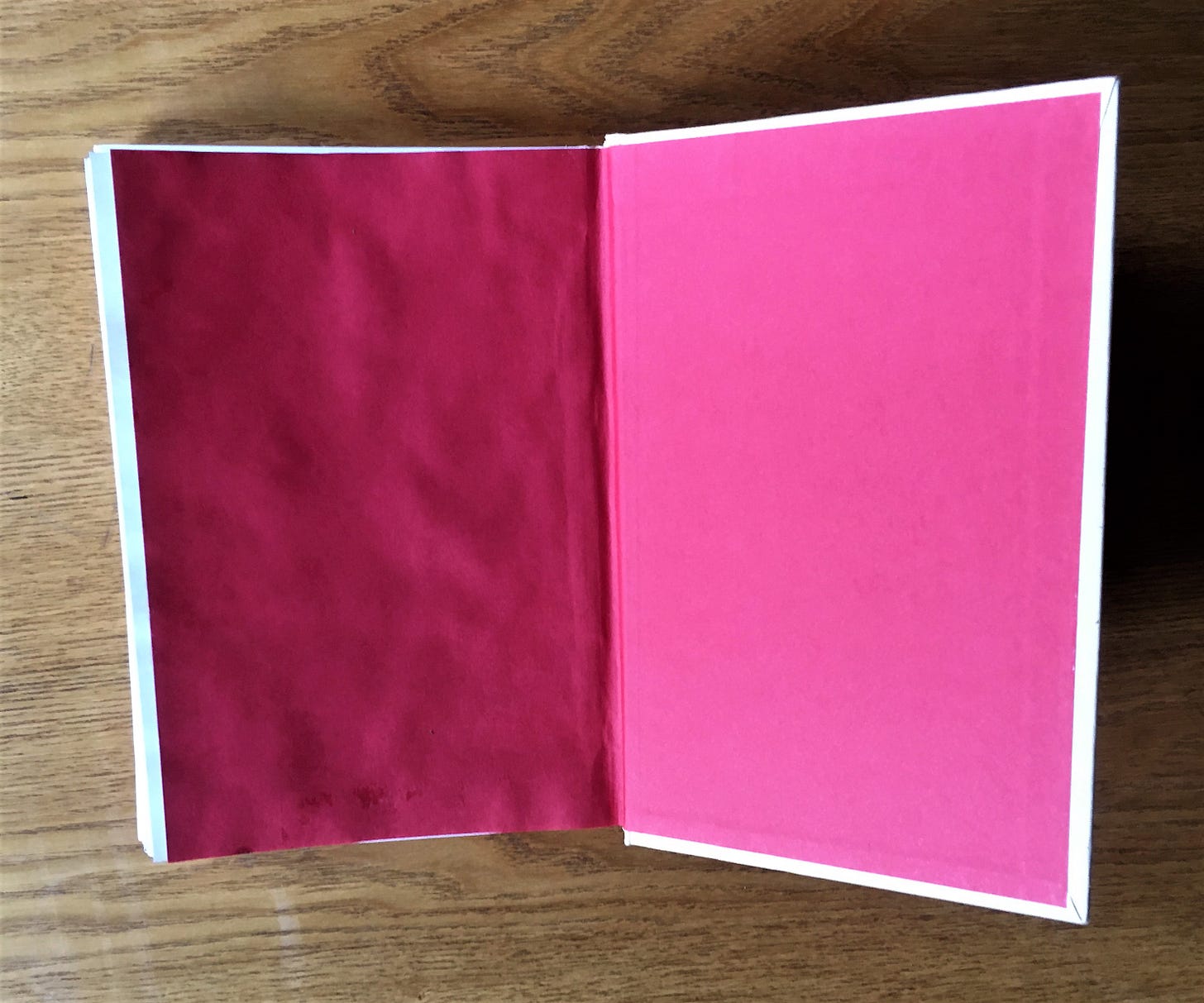The art of 'disensus,' or bookbinding 101
In which we demonstrate the importance of timeless, crafty skills that just might one day save your life... or at least preserve a bit of info in the most economical package ever invented.
By Anthony Valterra
As many of you know by now, Lisa and I are of the “Things Are Never So Bad That They Can't Get Worse” school of thought. But we are also practical. How long will it take for things to get really bad? Weeks? Months? Years? Longer? Who knows? Not us. And if you think you know how events are going to play out, you’re probably wrong.
Into this breach, we take the disensus approach. Disensus is the antonym of consensus. Consensus is a general willingness to agree on a thing. The idea is that by pooling our agreement, we come out ahead. Disensus is a willingness to disagree and let things shake out as they will. In the spirit of disensus, we occasionally try to learn a crafty skill that may not seem to have much value… today. But if everyone learns something different, some of those things may end up having value.
What crafty skills have you learned?
One of those crafty skills, for me, is bookbinding. Wow, talk about a useless skill, right? First of all, no one reads anymore, so who cares about books? Second, if you did want a book, just buy it digitally. That is a cheaper, more efficient solution. You can have an entire library right in the palm of your hand. And finally, if you really feel the need to own a paper-based book, just buy it off of Amazon. It’ll be delivered to your house in 48 hours or less.
All true… today. One of my heroes (Lisa says he’s my biggest “man crush”) is the widely read author, blogger, and yes, astrologer John Michael Greer, whose work focuses on the overlaps between ecology, spirituality, and the future of industrial society. Greer was once asked in what format would it be good to store information, in case we enter a dark age. He replied that the one format that was portable, accessible, copyable, and durable was the physical book. True, but probably not the cheap paper/glued together/slap-dash version one buys off of Amazon.
I’m old enough to remember going to libraries and accessing back issues of magazines that had been bound together into volumes. As I look both backward and forward through time, I can see huge amounts of information and knowledge that could be lost if it is not properly archived. I am aware that just binding things is not enough. Most periodicals are printed on very cheap paper, and even if bound, they will eventually degrade. But as I like to say (and plan on writing about soon), one should never let the perfect be the enemy of the good.
I’ve read a book on bookbinding and watched a YouTube video or two, but I find I retain information better when I can talk the details over with someone else. And as fate would have it, there is a wonderful organization here in St. Louis, Missouri, called Perennial whose mission is to
Build a creative culture of sustainability in which discarded items are transformed into valued and cherished resources.
If you live in or near St. Louis, you really should check out the org and their class offerings. I plan on taking quite a few more classes (one day I will darn a sock!). And one of the classes they offer is bookbinding.
Now, everyone chill out. I promise you a beautiful, hand-tooled, leather-bound, embossed tome is not what I came home with after only three hours.
No, no… I came home with Tuesdays With Morrie!
Of course, I did not write the novel Tuesdays With Morrie. What I did do was use the hardbound book Tuesdays With Morrie as a hardback “shell.” The teacher had a stack of hardbound books that we could strip the pages out of and reuse the hardbacks to create our own “books.” In this case, we cut paper to create a “blank book.”
Perennial is really into reusing, recycling, and refurbishing. And that includes the paper we used for the interiors of our blank books. We were even taught to sew signatures into our books.
When you are building a book, you do it in groups of pages called “signatures.” The size (as in number of pages) of a signature can vary, but I used eight pieces of paper folded in half to create 16 book pages. Each signature has two holes punched into them, and they are sewn together, creating what looks like a 16-page booklet. I created eight of these signatures, so my book has 128 pages. These signatures are then glued together and reinforced with a strip of cloth called “backing material.”
Then end pages are glued to the inside cover of the book, the first page of the first signature, the inside back of the book, and the last page of the last signature.
Once the glue is dried, the book is complete.
This project is a first, very simple attempt at figuring out how to bind my own books for my own purposes. As I continue this journey, I hope you will follow along!








I love that you're doing this. Right now it's just 'Tuesdays with Morrie,' but who knows what grand tome the future will bring?